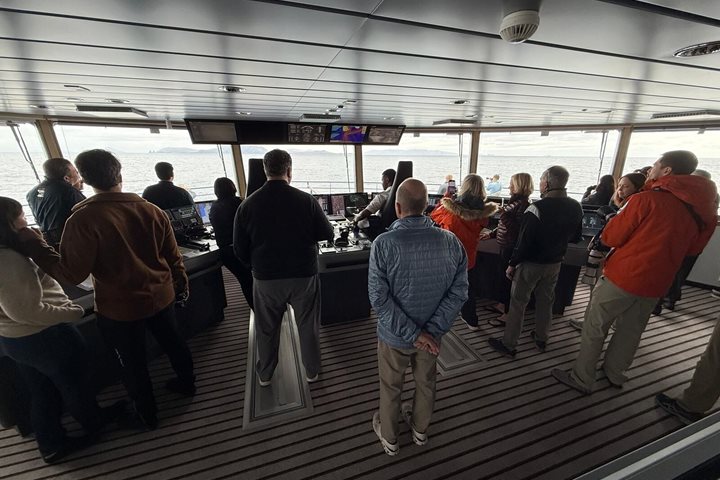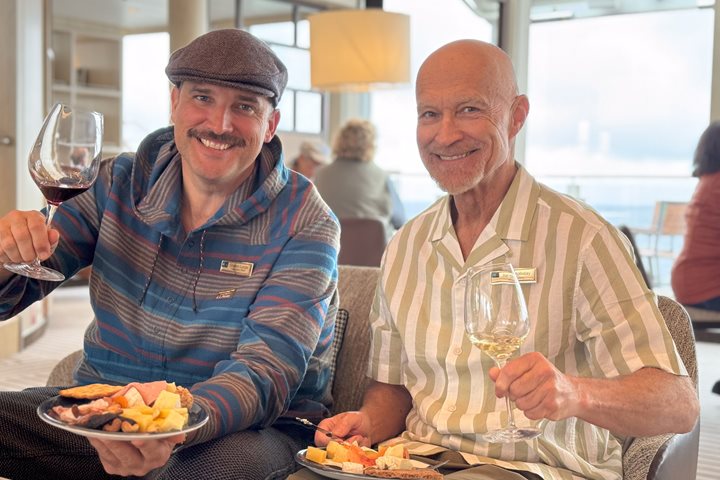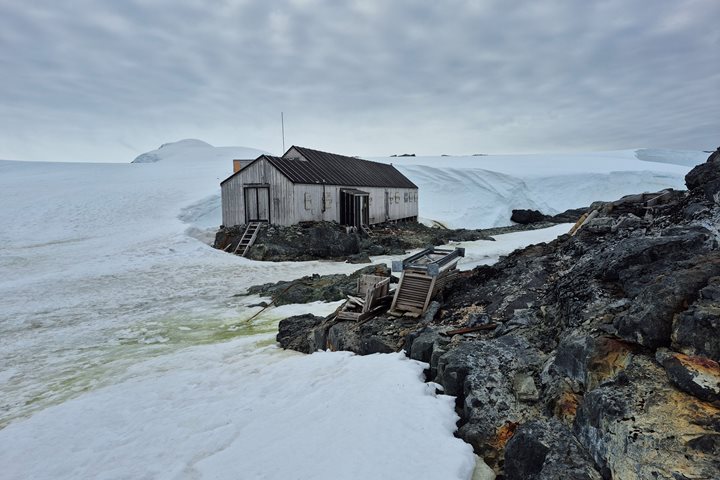In the morning, we stopped near several tiny islands with colonies of penguins. We observed many Adelie penguins and a few chinstraps and gentoos. Ice was heavily packed around these islands, and Zodiac cruises were offered in the morning. In addition to observing penguins on land, guests enjoyed watching them as they fed in the water. The water was blue and clear, allowing good visibility. Driving Zodiacs through the heavy pack ice was an adventure, and a variety of icebergs and sea ice sparkled under almost tropical sunshine.
In the afternoon, guests had options of landing at Port Charcot on Booth Island or Zodiac cruises among magnificent icebergs. At the landing site, guests were able to walk on the glacier and visit several colonies of gentoo penguins. Some of these colonies are at an elevation of several hundred meters, and the rocky outcrops are free of snow right now. Other colonies are at lower elevations, located on convex parts of landscape still covered with deep snow. In those sites, penguins are waiting for the snow to melt.
In the late afternoon, the ship sailed through the famous Lemaire Channel, offering spectacular views of mountains and glaciers under the clear blue sky.
In the evening, guests enjoyed a Filipino dinner and a crew show.







